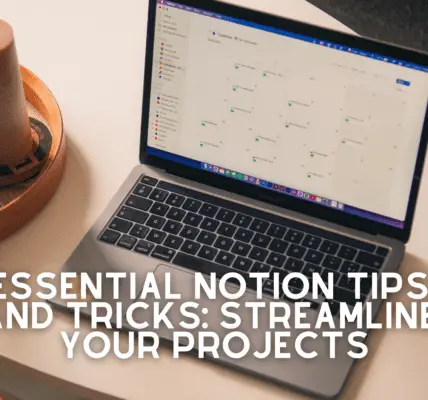Any company offering support to customers needs to have a ticketing system so that said support is more comprehensive on both ends—customer and staff.
In this article, we will take a look at Salesforce’s solution on that matter, and we will also clear punctual doubts about ticketing systems.
Can Salesforce be used as a ticketing system?
It surely can. As it is widely known, Salesforce actually counts with several functionalities. One of them is the ticketing system known as Desk.com. It is built-in in the basic version of Salesforce, allowing companies to easily set up a ticketing system so that customers can reach the support team in case something goes wrong with whatever it is that the company offers.
Alternatively, Salesforce can also integrate third-party ticket systems, as there are plenty of them, some of which might perform better or offer more expansive tools than Desk.com.
What is Salesforce good for?
Salesforce is an American on-demand software organization. More than just a platform, it is a set of solutions focused on customer service and relationship, marketing, community management, artificial intelligence, among other processes essential to current projects.
The company’s platforms are the industry standard for CRM solutions as they occupy approximately 20% of the world’s market share.
This is due to the prominence it has gained over the years related to its capacity for innovation and the robustness of the solutions offered.
To understand some of the reasons why many businesses use Salesforce solutions, through a simple user interface, you can:
- manage all contacts;
- work with qualified leads;
- organize activities and to-do lists;
- focus on the right negotiations;
- collaborate with your team;
- measure achievements;
- optimize the relationship with customers and potential customers;
- close more sales.
Which software is used for ticketing?
In the case of Salesforce, that would be Desk.com. It is an online tool that has the function of integrating support channels and centralizing them in a single location.
Thus, service professionals can have access to email inboxes, phone calls, and even social media requests all in one place. Read Can Salesforce Replace Mailchimp?
Desk.com counts with:
- Integration Features: API, CRM, Email, Mobile
- User-friendly panel
- A collaboration tool that can support Facebook, Gmail, Twitter, and others.
- Complaint Tracking System
- Integration with social media
- Self-Service Support Center
Is a ticketing system a CRM?
Salesforce is a CRM, which stands for Customer Relationship Management. Although it is common to associate the term directly with software, its definition goes beyond that.
In reality, CRM is a set of techniques, strategies, and technologies with the objective of managing and analyzing interactions with consumers and increasingly optimizing the relationship between brands and their audience.
In turn, CRM systems help to put this goal into practice in an automated way, storing valuable data from customers already won and potential, in addition to all contacts already made in the most different service channels.
It is possible to map the customer precisely through documentation of activities, notes, historical details, among other information.
In addition, it is known at which stage of the sales funnel each one of them is. This knowledge brings numerous advantages for various sectors, such as marketing and sales, reflected in the optimization of results as a whole.
These days, the ticketing process typically happens through help desk ticket software, which is only a building block of CRM.
Help desk refers to service to customers looking for solutions, clarification of doubts, and other requests for technical problems related to telephony, information technology, information technology, or even pre- and post-sales.
Does Office 365 have a ticketing system?
Yes, and that would be SharePoint Help Desk.
Some of the benefits of integrating the SharePoint ticketing system across the enterprise are listed below.
- Many people already use SharePoint or Office 365 and are familiar with the ticketing system.
- The SharePoint software system has amazing customization qualities and is highly integrative, which allows the customers and the company to adapt the ticketing process according to the customer’s needs.
- As an integrated product from Microsoft, SharePoint is easy to use.
- In the portfolio app development software, the system can be available on any type of device which helps the company to be available 24 hours a day, 7 days a week.
- Data encryption, multi-layer authentication, user permission, and other factors provide high system security.
- Approval, notifications, requests, and email alerts are the result of an automated workflow.
- Subscription plans are affordable.
How to choose the best Help Desk
Here we will explore how you should go about finding the right Help Desk among all options in the market.
In this article, we already recommend some good options, but it is important that you know how to analyze them.
Budget and cost-benefit
Assess your budget and available resources, prioritizing a tool that allows for scalability. Here’s another great piece of news: sometimes, your company can benefit enormously from a free and reputable open-source system on the market.
Consider immediate needs
When analyzing your help desk options, map all the processes in the area and make a survey of which resources are essential for your business (and which could contribute even more to your success).
A valuable tip in this regard is to create a list of features for the ideal help desk system. On paper, classify features into fundamental, optional, and superfluous. Which functions can you give up and which would be essential?
Consider how the chosen Help Desk helps other departments
Pay attention to the versatility of the features and talk to your company’s managers, mainly involving the IT and product departments.
It is worth noting, in this sense, that this type of system is extremely efficient for the management of tickets and infrastructure, which can be perfectly applied to opening internal tickets for the resolution of problems and IT requests, for example.
Which ticketing tool is best?
Even though Salesforce has its own help desk ticketing system, it is common for many companies to use Salesforce along with a third-party ticketing system because of extra tools, smoother functioning, and better user interface.
SharePoint Help Desk also isn’t a very popular choice.
So, what’s left in terms of the ticketing system? Well, there are plenty of options in the market right now, several of them being completely compatible with Salesforce.
An extremely well-rated help desk right now is Freshdesk. It integrates seamlessly with Salesforce.
Running just beside it is Zendesk, which is also compatible with Salesforce.
Freshdesk offers a system called Freshdesk Arcade. The system’s objective is to increase workers’ productivity and make their work more interesting.
An administrator sets goals and rewards like badges and points for completing certain tasks.
In turn, Zendesk developed the Benchmark tool to allow companies to compare key help desk metrics with 25,000 companies worldwide.
One of Zendesk’s unique features is automated ticket sharing. This feature is appreciated by large companies as it allows the sharing of tickets between multiple Zendesk accounts. Freshdesk, on the other hand, allows you to speed up work using keyboard shortcuts.
While both Freshdesk and Zendesk have a considerable feature set and offer a simplified helpdesk, Freshdesk is considered a solution for small and medium teams, while Zendesk meets the needs of medium and large teams.
What is the process of ticketing?
The process of ticketing happens on the support branch of a company’s integrated systems (that can be Zendesk, Freshdesk, Desk.com, etc.).
The first thing that happens is the creation of a document called “ticket” which contains information about an issue that needs to be solved. The ticket, after being created, is visible and its information accessible to both customer and rep.
After a ticket is created and the information reaches any person of the support staff responsible for solving issues, the staff can start working to solve the problem.
Sometimes, an automatic response is sent to the customer saying that the ticket has been received and someone is already working on the case.
A new, non-automatic answer is sent when the issue is solved or the support team needs more info to address the issue properly.
All of this is stored in a thread, every step becoming a new part of the information contained in the ticket. Customers can ask new questions on the same ticket.
Tickets are closed when the issue has been completely solved and the customer has been informed of such solving. However, if new questions or issues arise, a ticket can be reopened. Instead of contacting through a new protocol, matters can resume from where they were left off.
Some ticketing systems even include built-in customer feedback tools like NPS® which can collect customer reviews every time a ticket is closed.
How to create a ticketing system in Salesforce
Before creating a ticketing system in Salesforce, you need to decide what solution you will use among all the ones available in the market. Even though everything is called a help desk, each one might work a bit differently.
Each company that offers integration with Salesforce has a very detailed guide on how to make such integration happen. Since we already talked about how Zendesk and Freshdesk are excellent options right now, here go the links for their guides:
- Zendesk guide for Salesforce integration
- Freshdesk guide for Salesforce integration
Curiously enough, it isn’t so explicit at Salesforce’s site how Desk.com should get going, but here is a good guide on how to do it if you choose to go this way.
The SharePoint Help Desk isn’t much used by companies, but if you are already using other Microsoft applications, maybe you might want to give it a shot because of its great integration. Here you can learn how to set it up.
Final Thoughts
If your company offers support to customers, then it is essential it also offers the best ticketing system.
Here, we scrutinized all the information you need to have right now to start deciding what tool will best serve your operations.
If you are not the IT professional of your company, you must talk to them before making the final decision. If you are the IT, then make your voice heard.



